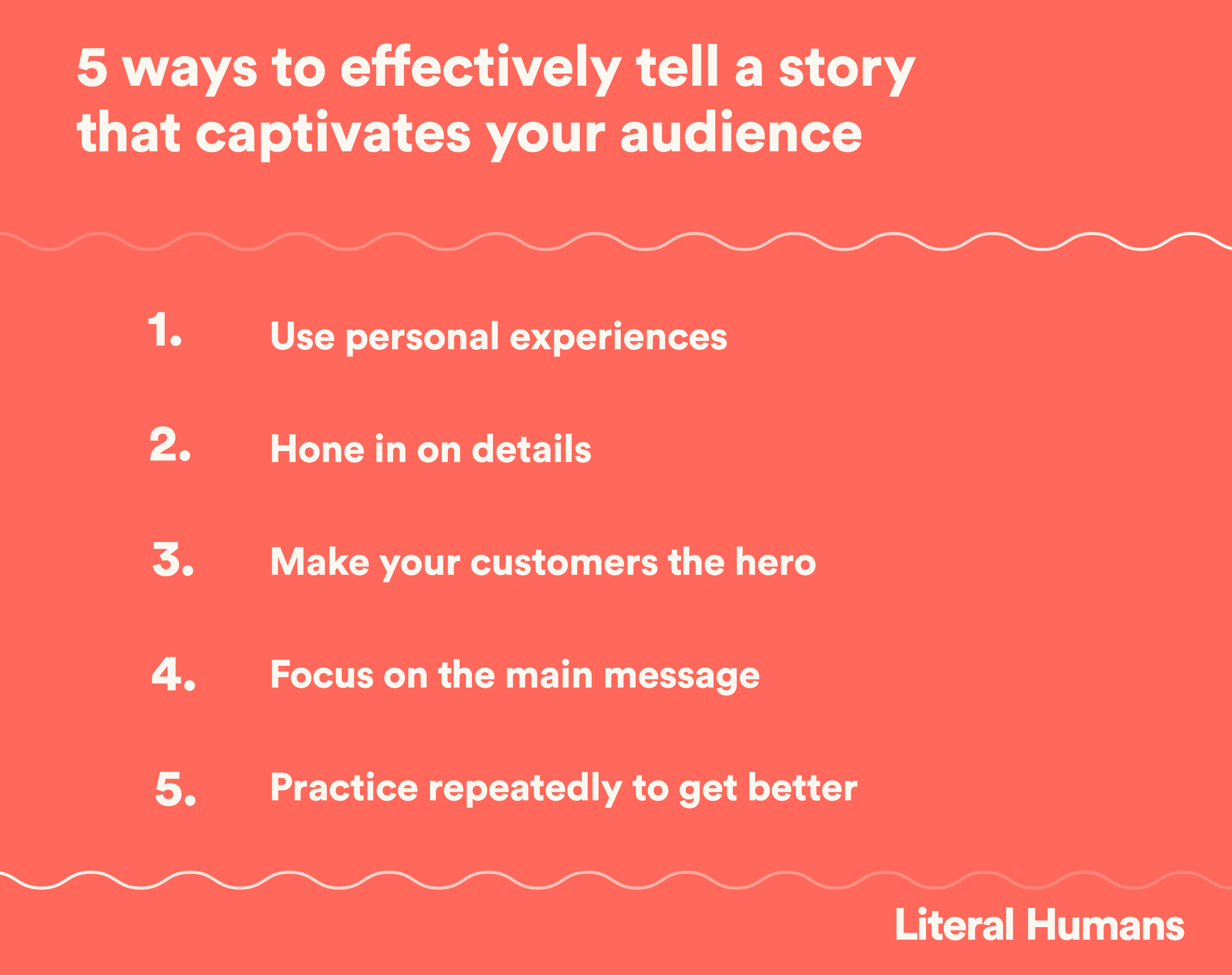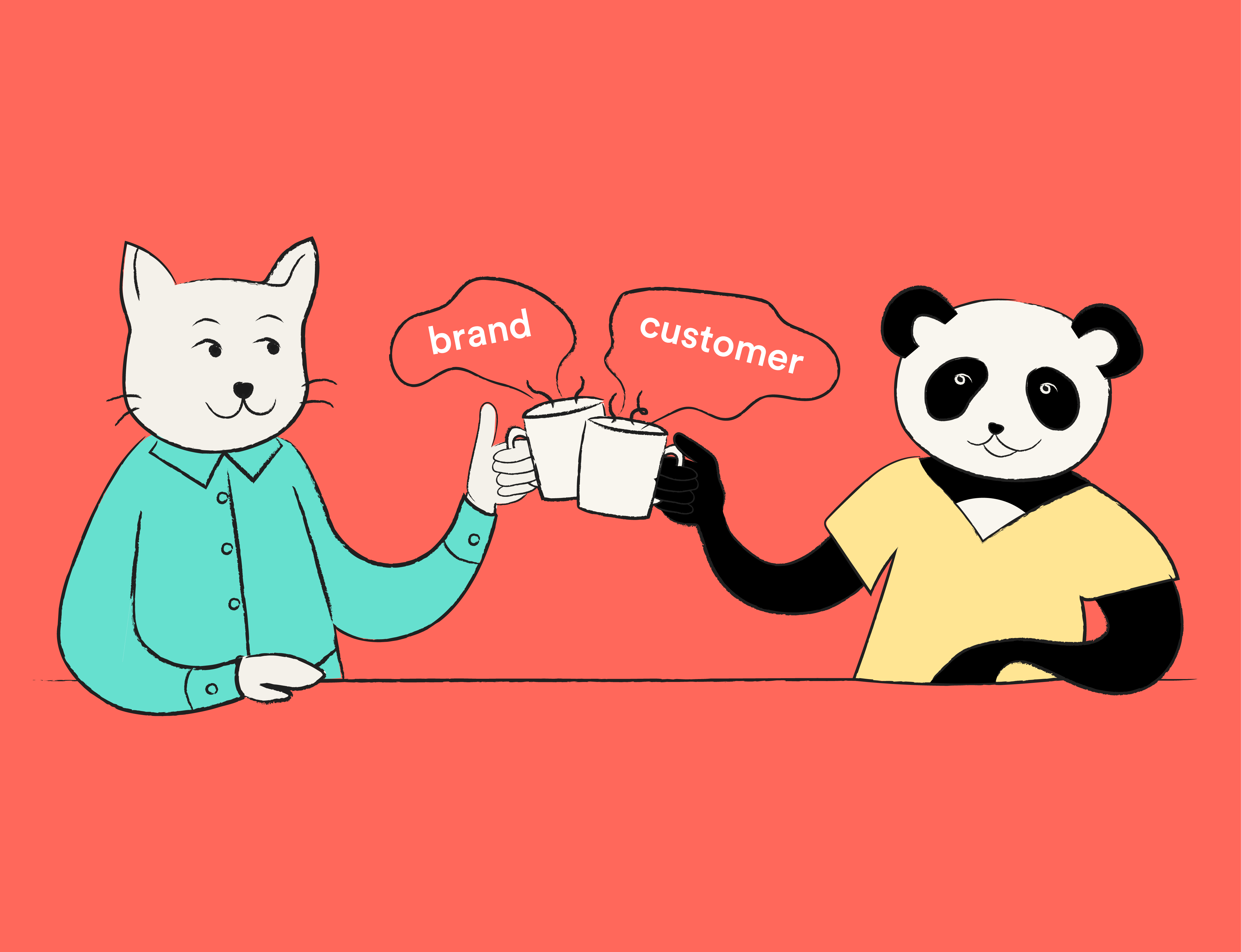Stories have the power to pull us in, transporting us to another time and place. They connect us to what has been and give us hope for what will be.
They’re an escape from everyday reality, and at the same time, a strategic business tool.
Clearly communicated stories have the potential to cut through digital noise to capture and keep people’s attention.
And any brand that hopes to stay top-of-mind as industries become more competitive needs to have a story that spreads like wildfire. And not just any story, but one that properly conveys its overarching vision and purpose to the outside world.
It’s an art that rewards the successful handsomely, leaving others behind in the dust.
Let’s dive into how you can propel your brand above the rest with storytelling and take a look at examples in the wild from LinkedIn Creators who are doing just that.
Why storytelling is so powerful
At a very high level, storytelling is a fundamental part of being human.
We humans need stories to keep our minds fresh and make sense of the world around us. They allow us to imagine different strategies at play in various situations.
And evidence shows that the more we hear and read stories, the easier we’re able to empathize with others. (In our current day and age, who couldn’t use a generous dose of empathy?)
How storytelling skyrockets your brand
The key to storytelling isn’t only something that’s passed down from generation to generation. It’s a powerful weapon for companies to connect with their audience to get better business results.
Here’s why:
It makes your brand more memorable
Gone are the days where facts, data, and statistics have a lasting impression on public opinion. Stories are remembered up to 22 times more than facts alone. And this is common knowledge across marketing campaigns.
Take Nike for example.
The exercise conglomerate has been leveraging the power of storytelling with their “Just Do It” campaign for longer than I’ve been alive—since 1988, to be exact.
The first TV spot to use the tagline featured 80-year-old Walt Scott jogging shirtless across the Golden Gate Bridge. His usage of Nike shoes was worked into the ad visually, but not the focal point. The focus was on Scott and his commitment to run 17 miles every morning, despite the weather.
The commercial launched at a time where many brands were (and still are) pushing the sale above the story.
It makes your brand more human
In the same light, storytelling is a powerful way to humanize your brand.
No longer are you speaking to your audience from a pedestal. You’re on their level. Because they feel understood, this keeps them coming back for more to engage with your content or purchase your product or services.
A brand that takes human storytelling to heart is GoodLife Fitness, a chain of Canadian gyms.
Instead of concentrating their marketing efforts on sculpted men and women who look like they live at the gym, GoodLife Fitness takes a different route — year in and year out.
Back in 2014, they launched a campaign called “Live Your Good Life.” These 15- and 30-second-long ads were created to celebrate the everyday heroes that exist in all of us.
And even a couple months ago, they launched another campaign called “Get YOU Back,” where they encourage everyone to get their mental and physical health, confidence, and strength back post-pandemic.
Again, featuring very everyday people from all walks of life.
People understand your business better
When you fashion your stories around your brand’s values and purpose, your audience will understand how your company works and what it stands for.
It’s the perfect way to showcase your company without coming across as salesy.
The footwear brand Minnetonka is a shining example of this.
Minnetonka prides itself in being an independent, family-run business for over 75 years. They’re open about the company’s history, freely diving into the brand’s beliefs and its relationship with its customers.
Their goal is to produce comfortable, quality footwear that transcends time for generations and generations to come.
Minnetonka is also no stranger to user-generated content (UGC). Customers can upload their Minnetonka purchases and show how they made the brand’s style their own on the #MyMinnetonka gallery.
(Check out how to humanize your brand with UGC to kick your marketing campaigns up another notch.)
5 ways to effectively tell a story that captivates your audience (+ examples from LinkedIn Creators who just get it)

One does not simply tell a story. In order to get the most bang for your words, use the following tactics (expertly portrayed by a few select creators):
Use your own experiences
No one is better equipped than you are to tell your own story.
Include the good, the bad, and the ugly. All the emotions you felt, the thoughts that passed through your head, and the rawness of the experience.
Having trouble putting your finger on what to say? Think about noteworthy times leading up to success in your career, a fleeting moment that forever defined how you view the world, or even lessons learnt the hard way.
The key here is to use an anecdote told from your own perspective that illustrates the barriers you had to overcome to get to where you are today, just like Catherine Lethbridge did below.
Hone in on the details
Along the same lines, remember: Good stories use detail. The more complete, personal, and revealing the details, the more the reader has to grab onto.
Get in the habit of observing anything and everything about the moment. How it made you feel, how it made you think, everything.
Dwell on the exact moment. Absorb it all, just like Eddie Shleyner does in this post.
Make your customers the hero of the story
Yes, you’re the main character. But if you want to smash the story out of the ballpark, you need to speak to your customers.
Angle the story from their POV so they can connect with the message.
Make them believe they’re reading their own story — as in, they’re the hero. You’re just guiding them along in their own journey.
Ash Rathod nails the sentiment of this point in his 67-word LinkedIn post.
Many brands slip up here. They fall into the trap of focusing too much on how great they are, celebrating their own victories and decisions. But at the end of the day, customers don’t generally care about YOUR story. They care about their own.
Speak to your customer’s current situation. Then, take them to where they want to go.
Focus on the main message
It’s easy to get carried away in the details of your story, especially if it was a particularly memorable experience.
But if you want your story to be effective, you need to keep it simple and straightforward. Focus on how the experience aligns with the core message.
As interesting as they may seem, omit unrelated details. They clutter.
Let’s take a look at Chima Mmeje’s timeless post.
You’ll see Chima didn’t focus on the school environment, classes she took, nor how many childhood friends she had.
Instead, she narrowed in on the most important details surrounding her first entrepreneurial venture, details that show how she met the needs of body-conscious schoolgirls to make a profit.
Practice, practice, practice
When you’re just starting out, don’t get discouraged if you’re unable to get the message just right from the get-go.
Storytelling is like a muscle. The more you exercise it, the stronger it’ll become.
(But if you need some help and prefer to DIY, here’s a quick guide on how to tell a compelling brand story.)
Stand out with storytelling
As the digital world gets noisier and noisier, brands have a choice: differentiate or die. (May sound harsh, but we’re being serious. #sorrynotsorry)
Stories are the best ways for you to ease yourself into the mental space of your audience while still holding true to your brand’s values and purpose.
To recap, here’s what you need to keep in mind to effectively captivate your audience using stories:
- Use your own experiences.
- Narrow in on the details.
- Make your readers the hero of the story.
- Focus on the main message.
- Practice, practice, practice.
Try them out, and watch your brand take off to the next level. And if you want to soar quicker, reach out to us. We specialize in helping brands capture their authentic stories with H2H marketing.









